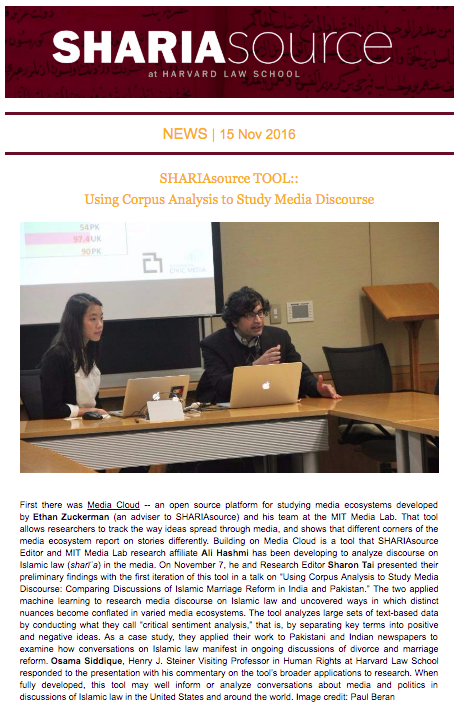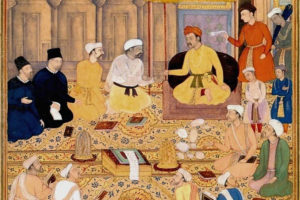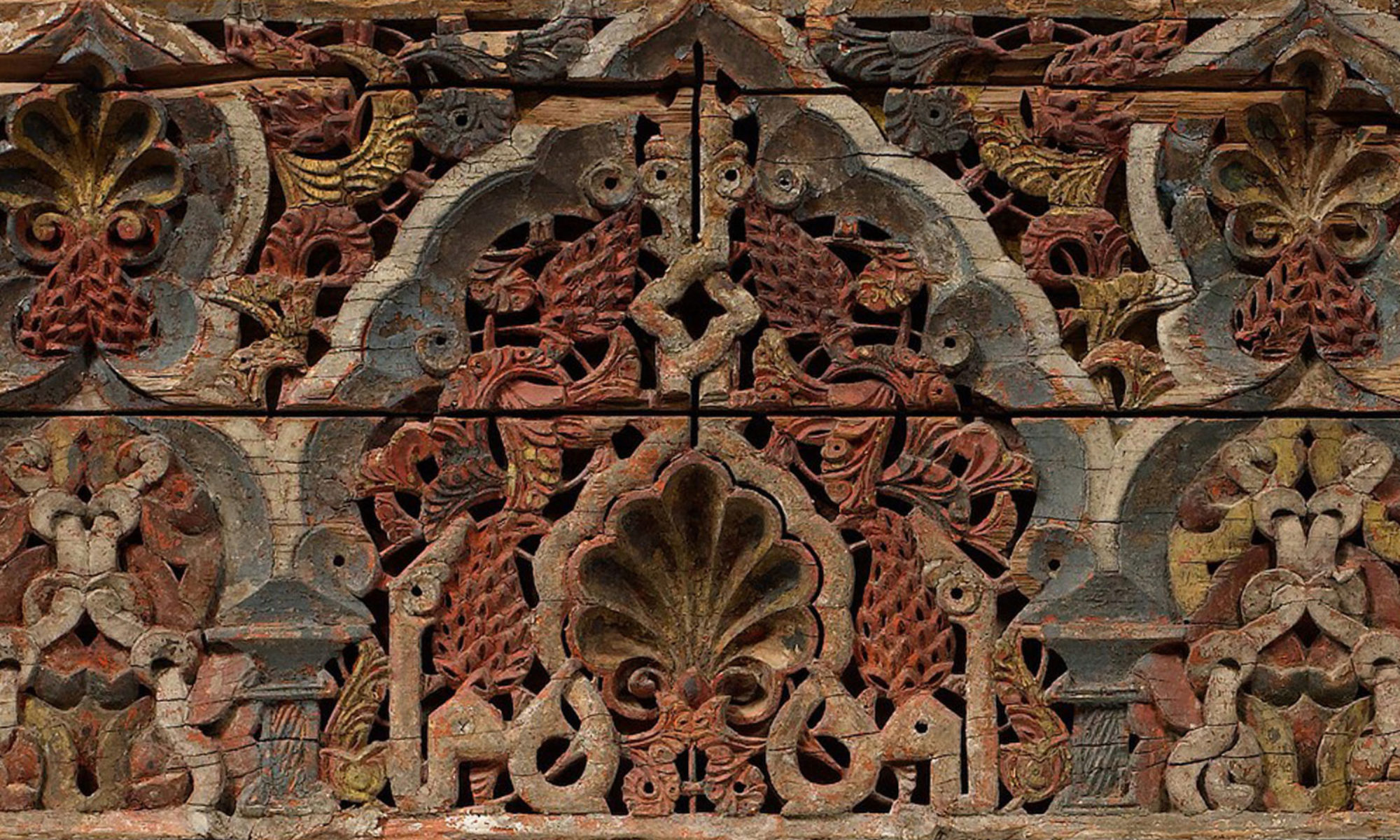
 SHARIAsource TOOL:: Using Corpus Analysis to Study Media Discourse First there was Media Cloud — an open source platform for studying media ecosystems developed by Ethan Zuckerman (an adviser to SHARIAsource) and his team at the MIT Media Lab. That tool allows researchers to track the way ideas spread through media, and shows that different corners of the media ecosystem report on stories differently. Building on Media Cloud is a tool that SHARIAsource Editor and MIT Media Lab research affiliate Ali Hashmi has been developing to analyze discourse on Islamic law (sharīʿa) in the media. On November 7, he and Research Editor Sharon Tai presented their preliminary findings with the first iteration of this tool in a talk on “Using Corpus Analysis to Study Media Discourse: Comparing Discussions of Islamic Marriage Reform in India and Pakistan.” The two applied machine learning to research media discourse on Islamic law and uncovered ways in which distinct nuances become conflated in varied media ecosystems. The tool analyzes large sets of text-based data by conducting what they call “critical sentiment analysis,” that is, by separating key terms into positive and negative ideas. As a case study, they applied their work to Pakistani and Indian newspapers to examine how conversations on Islamic law manifest in ongoing discussions of divorce and marriage reform. Osama Siddique, Henry J. Steiner Visiting Professor in Human Rights at Harvard Law School responded to the presentation with his commentary on the tool’s broader applications to research. When fully developed, this tool may well inform or analyze conversations about media and politics in discussions of Islamic law in the United States and around the world. Image credit: Paul Beran
SHARIAsource TOOL:: Using Corpus Analysis to Study Media Discourse First there was Media Cloud — an open source platform for studying media ecosystems developed by Ethan Zuckerman (an adviser to SHARIAsource) and his team at the MIT Media Lab. That tool allows researchers to track the way ideas spread through media, and shows that different corners of the media ecosystem report on stories differently. Building on Media Cloud is a tool that SHARIAsource Editor and MIT Media Lab research affiliate Ali Hashmi has been developing to analyze discourse on Islamic law (sharīʿa) in the media. On November 7, he and Research Editor Sharon Tai presented their preliminary findings with the first iteration of this tool in a talk on “Using Corpus Analysis to Study Media Discourse: Comparing Discussions of Islamic Marriage Reform in India and Pakistan.” The two applied machine learning to research media discourse on Islamic law and uncovered ways in which distinct nuances become conflated in varied media ecosystems. The tool analyzes large sets of text-based data by conducting what they call “critical sentiment analysis,” that is, by separating key terms into positive and negative ideas. As a case study, they applied their work to Pakistani and Indian newspapers to examine how conversations on Islamic law manifest in ongoing discussions of divorce and marriage reform. Osama Siddique, Henry J. Steiner Visiting Professor in Human Rights at Harvard Law School responded to the presentation with his commentary on the tool’s broader applications to research. When fully developed, this tool may well inform or analyze conversations about media and politics in discussions of Islamic law in the United States and around the world. Image credit: Paul Beran
 REVIEW: Judges on Cushions and Under Trees: Thoughts on “Qāḍī Justice” and Hyperpolemics Guest contributor Haider Hamoudi reviews Professor Intisar Rabb’s, SHARIAsource founding editor-in-chief, new article in the Suffolk Law Review entitled Against Kadijustiz: On the Negative Citation of Foreign Law. Rabb focuses on how American courts have utilized inaccurate portrayals of “qāḍī justice” as antitheses to American court procedures. Hamoudi notes that this point is all the more important when one considers that using inaccurate and reductive caricatures to advance polemical arguments is a technique used as well in the history of Islamic law, to the detriment of the arguments. Read more. Image credit: Chester Beatty Library, Dublin
REVIEW: Judges on Cushions and Under Trees: Thoughts on “Qāḍī Justice” and Hyperpolemics Guest contributor Haider Hamoudi reviews Professor Intisar Rabb’s, SHARIAsource founding editor-in-chief, new article in the Suffolk Law Review entitled Against Kadijustiz: On the Negative Citation of Foreign Law. Rabb focuses on how American courts have utilized inaccurate portrayals of “qāḍī justice” as antitheses to American court procedures. Hamoudi notes that this point is all the more important when one considers that using inaccurate and reductive caricatures to advance polemical arguments is a technique used as well in the history of Islamic law, to the detriment of the arguments. Read more. Image credit: Chester Beatty Library, Dublin
See the full newsletter.

